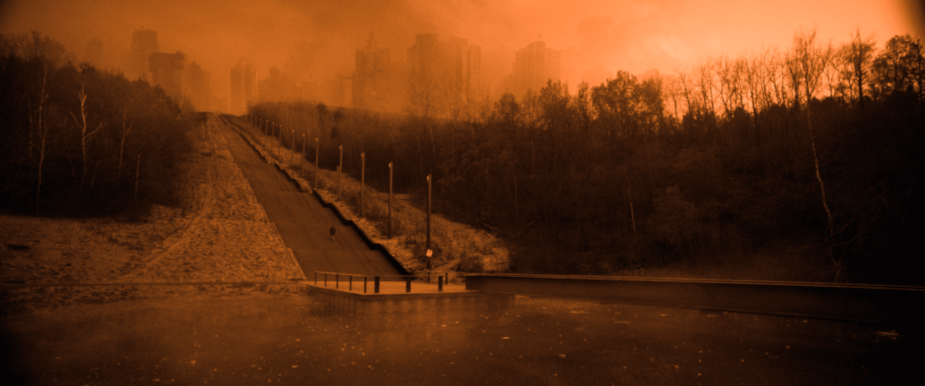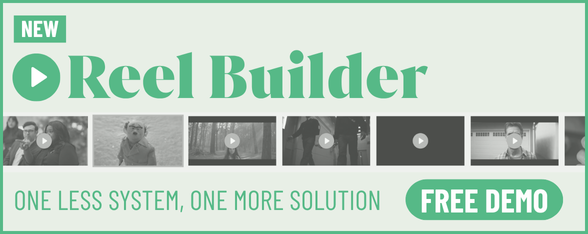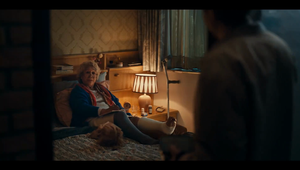
Behind the Craft: Mattijn Willems

Behind every great creative project is a team of talented individuals who bring it to life. At Ambassadors, we're proud to work with an incredible team of artists each bringing their own creativity, expertise, and passion to what we do. In this series, we're taking you behind the scenes to showcase the people behind the craft. Today we're catching up with Mattijn Willems, one of our talented sound designers.
Q> Who are you and what do you do?
Mattjin> I’m Mattijn Willems, sound designer at Amp.Amsterdam, part of Ambassadors. I’m responsible for the entire audio post-production process. From recording voice-overs to sound designing and mixing for all types of media, from TV/radio to cinema.
Q> How did you get your start in sound design?
Mattjin> I always had a passion for music and films, but to be honest, I kind of stumbled into sound design during my studies at HKU. Before that, I didn’t even know it was a profession. Once I tried it, I realised I really enjoyed it, and that I had a natural talent for it too. Not many students were going into sound design at the time, everyone wanted to be the next Martin Garrix and focused on music production. So I also saw an opportunity to go all-in. After graduating, I spent five years working in film before looking for a new challenge, and that’s when I found Amp.
Q> Where do you look for inspiration? Who or what inspires you?
Mattjin> Inspiration is everywhere. I’m always listening, whether I’m on the street, watching a film, or playing a game. Sound is something I’m constantly aware of. I admire Walter Murch, Mark Magini, and also pioneers like Gary Rydstorm (Jurassic Park) & Ben Burtt, who created the iconic sounds for Star Wars and WALL-E, and directors like Scorsese and Villeneuve who already think about sound when writing their scripts.
Q> What’s been your biggest learning in your career so far?
Mattjin> It’s hard to pick just one thing. What I’ve realised is that sound design is something you grow into through years of doing it. It isn’t something you learn from a textbook or a few YouTube tutorials. It’s a craft that you develop by doing, listening closely, by making mistakes, and by learning from the people around you. Every project is different and requires a unique approach. There are so many small decisions that can make or break a scene. The wrong sound at the wrong moment can pull someone out of a story.
You’re constantly asking yourself: is this too loud? Is this too distracting? Should I bring in a sound early, or let the silence speak? It’s a balance between technical precision and creative instinct.
Q> What do you enjoy most about your job?
Mattjin> The variety. Commercial work moves fast and keeps things exciting. In advertising especially, you might be working on six different projects in one day. I like the challenge of creating the best possible result in a short timeframe. It pushes me to make strong creative decisions quickly.
Q> What project or piece of work are you most proud of and why?
Mattjin> That would be Bijt (2024), a psychological thriller I worked on last year, directed by Guido Coppis. It was my first feature film, and it got nominated for a Gouden Kalf for Best Sound Design at the Dutch Film Festival. The challenge was to create a world that feels real, but slightly off. Every sound had to walk that line: familiar, but just strange enough to make you question where (or evenwhat) this world is. We spent months crafting every detail, from eerie birds that don’t exist to subtle industrial hums in the distance. And the fact that professionals from the industry recognised the work, that meant a lot.

Bijt (2024)
Q> Is there a project that you wish you’d worked on?
Mattjin> Tons! But if I had to pick one, ‘Blade Runner 2049’ or ‘Dune’ really impressed me. The sound design is insane. They had to build entire worlds from scratch, including dystopian environments, sci-fi vehicles, weapons and machines that don’t exist. That level of imagination and detail is incredible. I also recently replayed the game Red Dead Redemption 2, and the way the sound pulls you into that world, every footstep, gunshot, ambient sound, is just next-level. Games like that show how powerful sound can be in creating immersive experiences.
Q> How do you think the creative industry will change over the coming months/years? What are you most excited about?
Mattjin> AI is definitely going to change a lot, especially when it comes to technical or repetitive tasks. In sound, that might mean faster editing or cleaning up voice recordings automatically, which is great since it frees up more time for the creative side. There are tools now that generate sound effects based on a short prompt, which is wild.
That said, I don’t think AI will replace the storytelling part of sound design anytime soon. In my work, there’s so much subtle decision-making involved. Like, do we go with a loud door slam or a soft door close? That choice depends on the character’s emotion in that moment, a subjective feeling you get from the story, not from data. Sure, AI can analyse facial expressions or body language to guess at emotions, but it still struggles with the deeper context and subtle emotional layers that humans instinctively pick up on during a film.
So while AI can support the process, it’s human creativity and intuition that truly bring projects to life. Finding the right balance between the two is where things get exciting.















